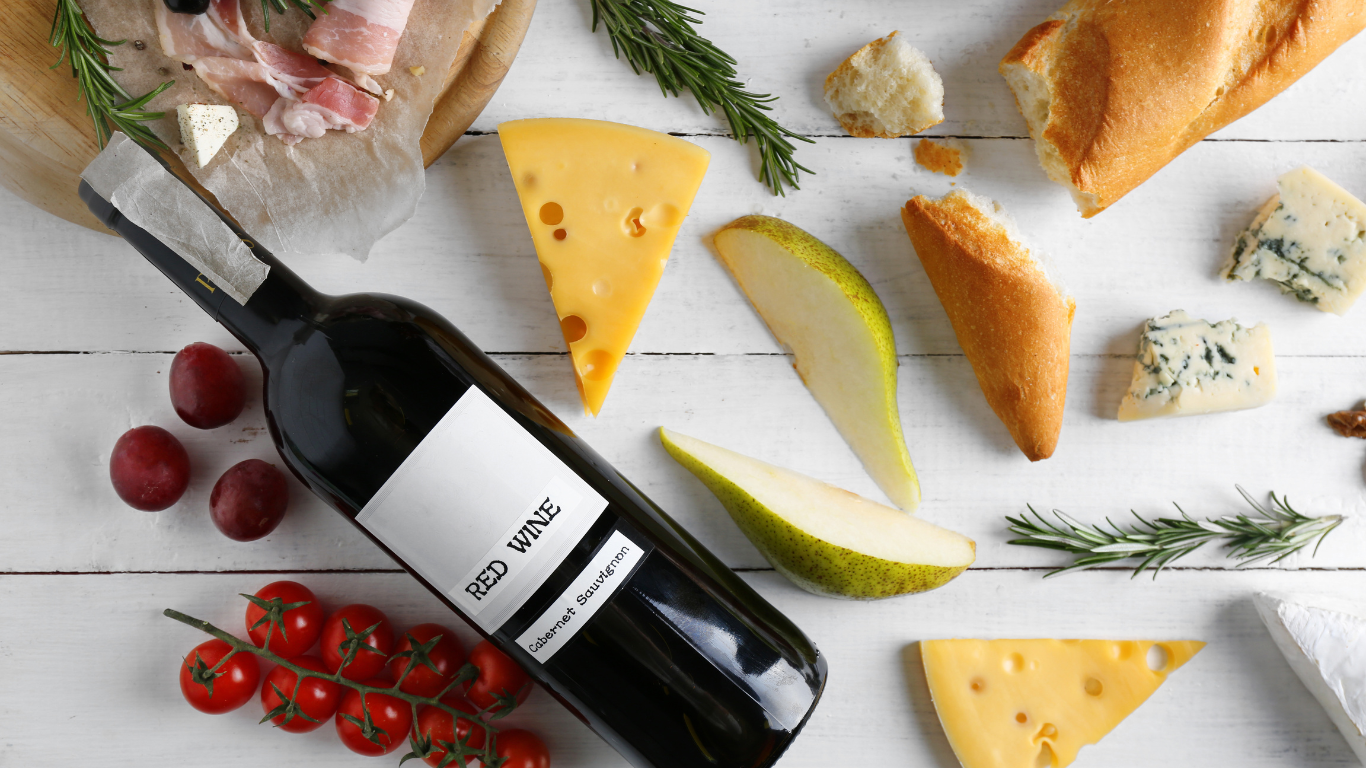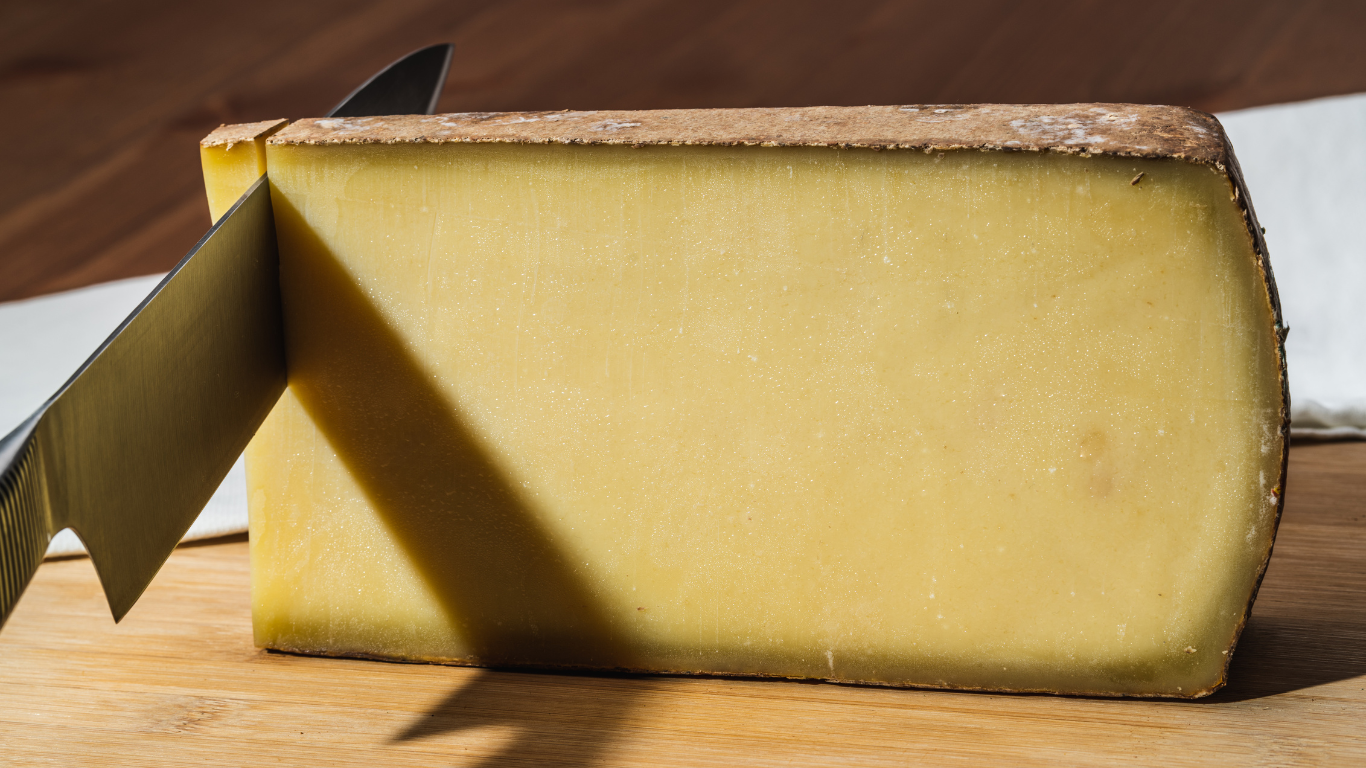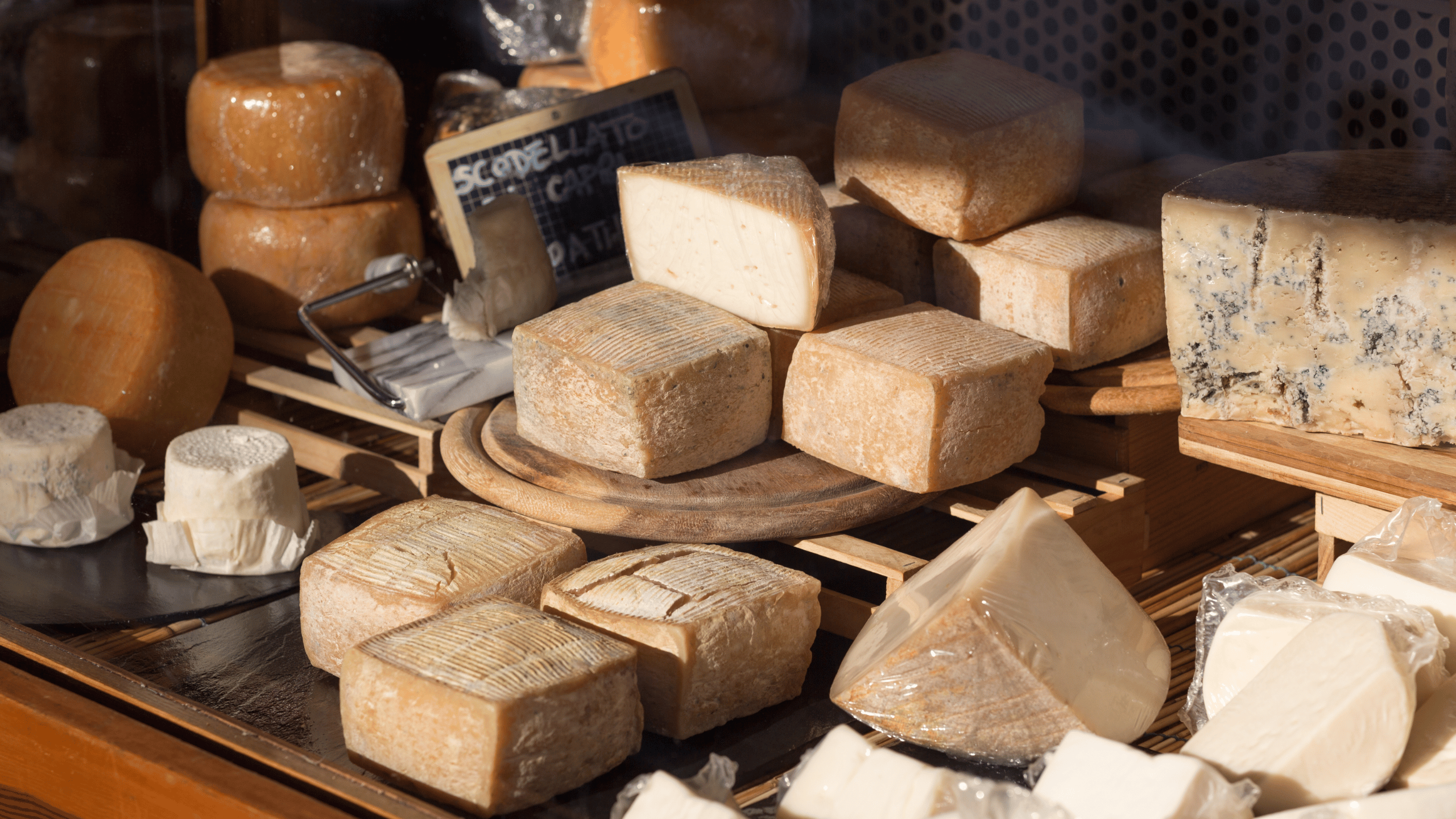Cheese, with its rich variety of textures and flavors, offers endless possibilities for culinary exploration. Whether you’re hosting a sophisticated gathering or simply enjoying a cozy evening, understanding the basics of cheese pairing can significantly enhance your experience. This comprehensive guide delves into the art of cheese pairing, offering detailed advice on how to match cheeses with wines, fruits, and other accompaniments to create a delightful and balanced tasting experience.
Understanding Cheese: A Guide to Types and Flavors
To master the art of cheese pairing, it’s essential to start with a solid understanding of the different types of cheese and their characteristics. This knowledge will help you make informed decisions about which cheeses to pair and how to complement their flavors.
- Fresh Cheeses
Fresh cheeses are typically unaged and have a mild, creamy flavor. They are often soft and spreadable, making them versatile for various dishes. Key examples include:
- Mozzarella: Originating from Italy, this cheese is known for its soft, moist texture and mild taste. It’s a staple in dishes like Caprese salads and pizza. When paired with wines, look for light, crisp whites like Sauvignon Blanc or Pinot Grigio.
- Ricotta: This Italian cheese has a creamy, slightly grainy texture. It’s commonly used in lasagna and desserts like cannoli. Fresh ricotta pairs well with light, fruity wines such as Riesling or sparkling wines like Prosecco.
- Goat Cheese: Known for its tangy flavor and creamy texture, goat cheese (chèvre) is versatile in both savory and sweet applications. It pairs excellently with wines that have a good balance of acidity, like Sauvignon Blanc or Chenin Blanc, and fruits like apples and figs.
- White Bloomy Rind
Soft-ripened cheeses have a distinctive edible rind and a creamy interior. They are aged for a short period, which contributes to their luxurious texture and rich flavor. Popular examples include:
- Brie: A classic French cheese, Brie has a smooth, buttery texture with a mild, slightly tangy flavor. It pairs wonderfully with medium-bodied wines like French Chardonnay or a crisp, dry Champagne. For a balanced experience, try pairing Brie with fresh fruits like pears or apples.
- Camembert: Similar to Brie but often with a more intense flavor, Camembert is creamy with earthy notes. It’s delicious with a range of wines, including fruity Pinot Noir or a sweet dessert wine like Sauternes. Accompaniments such as figs or crusty bread enhance its flavor.
- Semi-Hard Cheeses
Semi-hard cheeses have a firmer texture and range from mild to sharp. They are aged longer than soft-ripened cheeses, resulting in more complex flavors. Notable examples include:
- Cheddar: This versatile cheese can range from mild to extra sharp. Aged Cheddar pairs well with full-bodied wines such as Cabernet Sauvignon or Malbec. Mild Cheddar complements lighter whites like Chardonnay or even a crisp lager.
- Gouda: A Dutch cheese known for its creamy texture when young and a crumbly, nutty flavor when aged. Young Gouda pairs nicely with fruity reds like Pinot Noir, while aged Gouda goes well with rich reds like Zinfandel or port-style wines.
- Hard Cheeses
Hard cheeses are aged for extended periods, resulting in a dense, crumbly texture and concentrated flavors. Examples include:
- Parmesan: This Italian cheese is nutty, salty, and has a granular texture. It’s excellent with medium-bodied reds like Chianti or a robust, full-bodied wine like Barolo. Parmesan is also delightful with dry sparkling wines or even a crisp pilsner.
- Aged Pecorino: Made from sheep’s milk, Pecorino has a sharp, tangy flavor and crumbly texture. It pairs well with acidic reds like Chianti or lighter whites such as Sauvignon Blanc. It also complements robust beers like a strong ale.
- Blue Cheeses
Blue cheeses are known for their bold flavors and distinctive blue veins of mold. They can be creamy or crumbly with varying degrees of intensity. Examples include:
- Roquefort: A French blue cheese with a tangy, creamy texture. It pairs beautifully with sweet wines like Sauternes or a rich Port. Roquefort also works well with a variety of fruits, such as pears and apples.
- Gorgonzola: An Italian blue cheese that ranges from mild to sharp. It complements sweet wines like Moscato or a full-bodied red like Cabernet Sauvignon. Gorgonzola pairs nicely with honey and fresh figs.

Mastering Cheese and Wine Pairings
Pairing cheese with wine can elevate both the cheese and the wine, creating a harmonious balance. Here’s a detailed guide on how to pair cheeses with various types of wine:
- Light Wines with Light Cheeses
Light cheeses like fresh mozzarella or ricotta are best paired with light, crisp wines that won’t overpower their delicate flavors:
- Sauvignon Blanc: This wine’s high acidity and citrus notes make it a great match for fresh cheeses. The acidity helps cut through the cheese’s creaminess and enhances its mild flavor.
- Pinot Grigio: Known for its crispness and subtle fruit flavors, Pinot Grigio complements the light, creamy texture of fresh cheeses. It’s an excellent choice for cheeses like goat cheese or fresh mozzarella.
- Medium Wines with Semi-Hard Cheeses
Semi-hard cheeses such as Gouda and Cheddar have a more complex flavor profile that pairs well with medium-bodied wines:
- Chardonnay: A medium-bodied Chardonnay, especially one with oak aging, complements the rich, nutty flavors of semi-hard cheeses. The wine’s buttery notes enhance the cheese’s creaminess.
- Merlot: With its soft tannins and fruity profile, Merlot pairs nicely with the medium flavors of cheeses like Gouda or mild Cheddar. It provides a balanced pairing without overwhelming the cheese.
- Bold Wines with Hard and Aged Cheeses
Hard and aged cheeses like Parmesan and Pecorino have intense flavors that stand up well to robust wines:
- Cabernet Sauvignon: This full-bodied red wine with high tannins and rich flavors is perfect for pairing with aged cheeses like Parmesan. The wine’s structure complements the cheese’s intensity.
- Zinfandel: Known for its bold fruit flavors and spicy notes, Zinfandel pairs well with sharp Cheddar and Pecorino. The wine’s richness balances the strong flavors of the cheese.
- Sweet Wines with Blue Cheeses
Blue cheeses are best paired with sweet wines that balance their pungency and saltiness:
- Sauternes: This French dessert wine is sweet and rich, making it an ideal match for the sharp, creamy flavors of Roquefort or other blue cheeses. The wine’s sweetness counteracts the cheese’s saltiness.
- Port: The richness and sweetness of Port complement the strong flavors of blue cheeses like Gorgonzola. The wine’s deep flavors enhance the cheese’s complexity.

Enhancing Cheese with Fruits
Fruits can add a refreshing contrast to the richness of cheese, creating delightful flavor combinations. Here’s how to pair different types of cheese with various fruits:
- Fresh Cheeses with Fresh Fruits
Fresh cheeses have a mild flavor that pairs well with a range of fresh fruits:
- Berries: Fresh strawberries, blueberries, and raspberries provide a burst of sweetness and acidity that complements the mildness of fresh cheeses like mozzarella and ricotta. The acidity of the berries balances the cheese’s creaminess.
- Apples and Pears: Crisp, juicy apples and pears add a refreshing contrast to the soft texture of fresh cheeses. Their natural sweetness pairs well with the cheese’s mild flavor, creating a balanced pairing.
Soft-Ripened Cheeses with Stone Fruits and Figs
Soft-ripened cheeses like Brie and Camembert benefit from fruits with a hint of tartness or rich sweetness:
- Stone Fruits: Apricots, peaches, and plums offer a sweet-tart flavor that complements the creamy texture of soft-ripened cheeses. The juiciness of the fruit enhances the cheese’s richness.
- Figs: Fresh or dried figs have a rich, honeyed sweetness that pairs well with the creamy, earthy flavors of Brie or Camembert. The figs’ chewy texture contrasts nicely with the cheese’s softness.
- Semi-Hard and Hard Cheeses with Apples, Pears, and Nuts
Semi-hard and hard cheeses have robust flavors that are complemented by fruits and nuts:
- Apples: The tartness of apples cuts through the richness of aged cheeses like Cheddar and Gouda. The fruit’s crispness provides a refreshing contrast to the cheese’s texture.
- Pears: Ripe pears have a mellow sweetness that pairs well with the nutty and caramelized notes of hard cheeses like Parmesan. The fruit’s juiciness enhances the cheese’s flavor profile.
- Nuts: Nuts like almonds and walnuts add a crunchy texture and nutty flavor that complements many cheeses. Almonds pair well with mild cheeses, while walnuts enhance the richness of sharp cheeses.
- Blue Cheeses with Sweet and Juicy Fruits
Blue cheeses have bold flavors that are best paired with sweet and juicy fruits:
- Pears: Pears’ sweetness and juiciness balance the pungent flavors of blue cheeses like Roquefort and Gorgonzola. The fruit’s mild flavor complements the cheese’s intensity.
-Grapes Fresh grapesx, both red and green, provide a refreshing contrast to the strong flavors of blue cheeses. Their natural sweetness enhances the cheese’s profile.
Complementary Accompaniments: Nuts, Breads, and More
In addition to wine and fruits, various accompaniments can elevate your cheese-tasting experience. Here’s how to pair cheese with popular accompaniments:
- Nuts
Nuts add a crunchy texture and nutty flavor that pairs well with many cheeses:
-Almonds Almonds have a subtle, slightly sweet flavor that complements mild cheeses like fresh mozzarella and creamy goat cheese. Their crunch adds a delightful texture contrast.
-Walnuts Walnuts’ rich, slightly bitter flavor pairs well with sharp cheeses like blue cheese and aged Cheddar. The walnuts’ robust flavor balances the cheese’s richness.
- Bread and Crackers
Bread and crackers provide a neutral base that allows the cheese’s flavors to shine:
-Baguette: A crusty French baguette complements a wide range of cheeses. Slice it thinly and serve it alongside cheeses like Brie and Gouda for a classic combination.
- Crackers: Plain or lightly seasoned crackers are versatile and pair well with various cheeses. Their crisp texture provides a nice contrast to the cheese’s creaminess.

- Condiments
Condiments can add a burst of flavor that enhances the cheese:
- Honey: Drizzling honey over blue cheese or aged Gouda adds a touch of sweetness that complements the cheese’s richness. The honey’s floral notes enhance the cheese’s flavor.
- Fig Jam: Fig jam pairs exceptionally well with soft-ripened cheeses like Brie and Camembert. The sweet, fruity flavor of the jam enhances the cheese’s creaminess.
- Charcuterie
Charcuterie provides savory and salty flavors that pair well with cheese:
- Prosciutto: The delicate, salty flavor of prosciutto complements mild cheeses like fresh mozzarella and creamy Brie. The combination creates a sophisticated taste experience.
- Salami: Salami’s robust flavors work well with sharper cheeses like Cheddar and Gouda. The salami’s savory notes balance the cheese’s richness.
Crafting the Perfect Cheese Board
An impressive cheese board can be the centerpiece of any gathering. Here’s how to assemble a cheese board that is visually appealing and delicious:
- Choose a Variety of Cheeses
Offer a range of cheeses with different textures and flavors. Include fresh, soft-ripened, semi-hard, hard, and blue cheeses to cater to diverse tastes and preferences.
- Include Complementary Accompaniments
Add a selection of fruits, nuts, breads, crackers, condiments, and charcuterie. This variety provides different textures and flavors that enhance the cheese.
- Arrange Thoughtfully
Arrange cheeses and accompaniments on the board in a visually appealing manner. Place cheeses in separate areas and scatter accompaniments around them. Provide cheese knives and small utensils for easy serving.
- Label the Cheeses
Labeling the cheeses helps guests identify them and learn about their flavors. Include information about the cheese’s name, type, and notable characteristics.
Mastering the art of cheese pairing is about more than just matching flavors; it’s about creating a harmonious balance that enhances the overall tasting experience. By understanding the different types of cheese and how they interact with wines, fruits, and other accompaniments, you can elevate your cheese enjoyment to new heights.
From selecting the perfect wine to complementing cheeses with fruits and adding variety with nuts, breads, and condiments, cheese pairing is a delightful journey of exploration. Embrace the adventure of discovering new combinations and let your taste buds guide you to delicious discoveries. Whether you’re a cheese enthusiast or just starting to explore the world of cheese, these tips will help you create memorable and enjoyable cheese-tasting experiences. Happy pairing!




Leave a comment
This site is protected by hCaptcha and the hCaptcha Privacy Policy and Terms of Service apply.